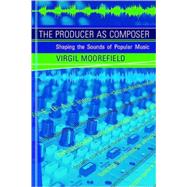
Note: Supplemental materials are not guaranteed with Rental or Used book purchases.
Purchase Benefits
What is included with this book?
| Acknowledgments | p. xi |
| Introduction | p. xiii |
| From Mirror to Beacon | p. 1 |
| Beginnings | p. 1 |
| The Brill Building Songwriters | p. 5 |
| Phil Spector's Wall of Sound | p. 9 |
| "Be My Baby" | p. 12 |
| Brian Wilson | p. 16 |
| "Good Vibrations" | p. 19 |
| Hits Off the Assembly Line: Motown | p. 21 |
| "I Heard It through the Grapevine" | p. 24 |
| George Martin and the Beatles | p. 26 |
| "Tomorrow Never Knows" | p. 29 |
| "A Day in the Life" | p. 32 |
| Frank Zappa | p. 35 |
| "Flower Punk" | p. 38 |
| The Situation at the End of the Sixties | p. 40 |
| The Studio as Musical Instrument | p. 43 |
| Sixteen Tracks and More | p. 43 |
| Dark Side of the Moon | p. 44 |
| Tony Visconti | p. 51 |
| Brian Eno | p. 52 |
| Music for Airports: "2/1" | p. 56 |
| My Life in the Bush of Ghosts | p. 59 |
| Bill Laswell | p. 62 |
| The Making of Swans' The Burning World | p. 64 |
| Trent Reznor | p. 70 |
| "Mr. Self Destruct" v. "Irresponsible Hate Anthem" | p. 74 |
| The Producer Takes Center Stage | p. 79 |
| The Discothèque and Musique Concrète | p. 79 |
| Disco: "The Producer's Genre" | p. 80 |
| "I Feel Love" | p. 81 |
| Michael Jackson's Work with Quincy Jones | p. 83 |
| "Billie Jean" | p. 85 |
| Kraftwerk and Conny Plank | p. 89 |
| Hip-Hop and the Rise of Sampling | p. 90 |
| Hip-Hop in the Late Eighties | p. 93 |
| "Bring the Noise" | p. 93 |
| The Hip-Hop Producer Today | p. 95 |
| Electronica | p. 97 |
| Remix | p. 103 |
| "Break on Through" (The Doors; BT Remix) | p. 106 |
| Re-editing Updated: Mash-Ups | p. 108 |
| The Contemporary Situation: Is the Producer Obsolete? | p. 109 |
| Glossary | p. 113 |
| Recordings Cited | p. 119 |
| Bibliography | p. 125 |
| Index | p. 131 |
| Table of Contents provided by Ingram. All Rights Reserved. |
The New copy of this book will include any supplemental materials advertised. Please check the title of the book to determine if it should include any access cards, study guides, lab manuals, CDs, etc.
The Used, Rental and eBook copies of this book are not guaranteed to include any supplemental materials. Typically, only the book itself is included. This is true even if the title states it includes any access cards, study guides, lab manuals, CDs, etc.